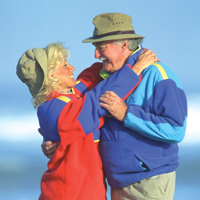
Features
Research
Continuing Education & Geriatric Clientele
As a therapist working with geriatric clients or any specialized group, it is necessary to seek education beyond your initial training. Implications associated with geriatric clientele include age-related health conditions. For example, an age-related loss of glomeruli and increased blood flow from the massage could stress the kidneys and increase the need for detoxification.
September 22, 2009 By Massage Therapy Magazine
As a therapist working with geriatric clients or any specialized group, it is necessary to seek education beyond your initial training. Implications associated with geriatric clientele include age-related health conditions. For example, an age-related loss of glomeruli and increased blood flow from the massage could stress the kidneys and increase the need for detoxification.
With Continuing Education you will be aware and prepared for this and other implications of treating your geriatric clientele.

|
|
|
|
Continuing education courses help to refresh previously learned information such as the physiological and psychological aspects of aging, cautions, and contraindications, assessment of older clients, modification of massage techniques.
Aspects affecting treatment include the client’s age, the stage of any disease, the client’s willingness to work on it, the client’s general physical and mental state, the cooperation of the client’s family, the support of the physician, your skill and resourcefulness.
Techniques used are largely determined by your training and by your willingness to keep learning. Techniques which are extremely helpful when working with elderly clients include Swedish Massage, trager, lymphatic drainage, fascial release, trigger point and neuromuscular techniques to name a few. Assess your client, establish your goal, and choose your learned technique accordingly. Monitor your client closely.
Beyond the mechanical part of your work, you should always remember that in some cases, you will be working with suffering human beings in an attempt to ease, not cure, their burden. That requires a lot of sensitivity toward your client’s emotional and basic human needs.
Take one step at a time and don’t contribute to your client’s discouragement by over-promising. Keep in touch with the client’s physician so that he/she can monitor any influence massage has on the effectiveness of medications.
For geriatric clients, massage can enhance blood circulation, improve joint movement, reduce muscle stiffness, ease mental stress, minimize arthritic and muscle pain, lower blood pressure and help improve age-related disorders.
Specialized education and continuing education to treat Geriatric Clients or any specific group, is necessary for a safe, successful and rewarding career.
Information extracted from written material provided by Dietrich W. Miesler, MA, CMT, founder, and Sharon Puszko, Ph.D, CMT, owner/director of The DAY-BREAK Geriatric Massage Institute in Virginia Beach, Virginia
Print this page